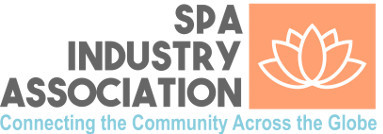
The spa industry has experienced remarkable growth in recent years due to the increasing emphasis on self-care and wellness. However, establishing and operating a successful spa business requires substantial capital investment, from securing a prime location to outfitting the facility with high-quality equipment and amenities.
Navigating the business financing landscape can be challenging, especially for spa owners and entrepreneurs seeking to launch or expand their ventures. Luckily, this article provides financing solutions that allow you to build a solid foundation for your spa business. Read on!
Traditional Bank Loans
Conventional bank loans are among the most common financing options for businesses seeking to grow or expand their operations. These loans can provide the necessary capital for various purposes, such as purchasing or renovating a property, acquiring equipment, or funding operational expenses.
Obtaining a bank loan requires a solid business plan, collateral, and a good credit history. Therefore, you should adopt a strategic approach, such as maximizing credit card payments, to improve your loan approval chances. You must also present a comprehensive business plan and financial forecasts.
For instance, if you aim to expand your spa into a wellness center, detail the expected costs for renovation, new equipment, and hiring skilled therapists, alongside revenue projections from new services. This preparation shows banks your commitment and capability to repay the loan, making you a more attractive candidate.
Small Business Administration Loans
If securing a traditional bank loan seems challenging, exploring loans offered by the Small Business Administration (SBA) could be a strategic move. The SBA specifically caters to small businesses, providing more accessible financing options with competitive terms.
One of the benefits of SBA loans is their lower down payment requirements and flexible overhead demands. This can be particularly advantageous for new ventures or when you plan to launch a new line of products or services.
SBA provides the upfront capital needed for production and marketing, allowing you to kickstart your project with less initial financial strain. Even if securing small business financing through other lending options may seem unavailable, meeting the SBA’s criteria can still open doors to the capital needed to support your business’s growth initiatives.
Equipment Financing
Consider equipment financing if you plan on upgrading your spa with the latest hydrotherapy tubs or massage chairs. This option allows you to spread the cost over time, ensuring better cash flow management.
With equipment financing, the items you invest in serve as collateral, potentially lowering interest rates. This means you can start enhancing your clients’ experiences immediately with new services without the financial stress of a large one-time purchase. It’s a practical way to keep your spa at the forefront of wellness technology while maintaining financial flexibility.

Crowdfunding
Crowdfunding has become a powerful tool for spa entrepreneurs seeking alternative financing to grow and expand their spa businesses. Platforms like Indiegogo and Kickstarter allow you to pitch your spa concept directly to potential backers worldwide.
These investors contribute funds in exchange for rewards or equity in the business. For instance, you could offer exclusive discounts or VIP packages as rewards for their contributions. This approach secures funding, helps gauge market interest, and builds a loyal customer base before you open your doors.
By leveraging the power of the crowd, you can bypass traditional lending constraints and turn your spa vision into a reality while fostering a community of supporters invested in your success.
Merchant Cash Advances
If your spa has a high volume of credit card transactions and requires swift financial support, a Merchant Cash Advance (MCA) could be a suitable option. This financing route provides rapid access to funds by leveraging your future credit card sales.
For example, if you plan a significant renovation to create a more serene and luxurious spa environment but find yourself in need of more cash. An MCA could quickly fill that gap without the need for physical assets as collateral. However, it’s crucial to understand the terms, as this convenience comes at a higher cost than other financing options.
Ensure you’re comfortable with the repayment structure, which is a proportion of your daily credit card sales, to maintain your spa’s financial health. By carefully considering the terms and repayment plan, an MCA can be a valuable tool for addressing immediate financial needs while enabling you to enhance your spa’s environment and services.
Strategic Financial Planning
Regardless of the financing solution you choose, it’s vital to approach the process with a strategic mindset. Develop an effective business growth plan that outlines your spa’s concept, target market, financial projections, and growth strategies. This plan will help you secure funding and serve as a roadmap for your business’s long-term success.
Additionally, consider consulting with financial advisors or industry professionals who can provide valuable insights on suitable financing options for your spa business. These experts can help you analyze the advantages and disadvantages of each approach, assess potential risks and returns, and develop plans to ensure your spa’s financial stability.
Conclusion
Building a solid financial foundation is vital for the success and longevity of any spa business. While navigating the world of financing can seem daunting, the options outlined in this article provide a diverse array of solutions tailored to the unique needs of spa owners and entrepreneurs. Remember, securing financing is an ongoing process that requires strategic planning, adaptability, and a deep understanding of your business’s financial health. Consult with financial advisors, industry experts, and your trusted network to make decisions that position your spa for sustainable growth and profitability.
–



